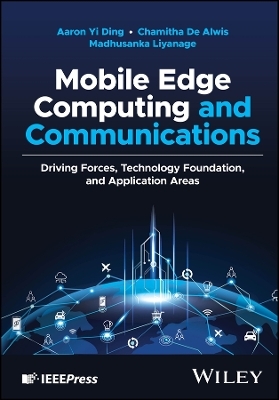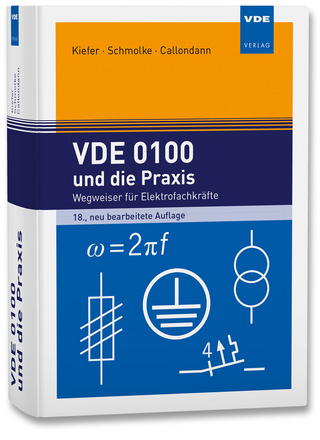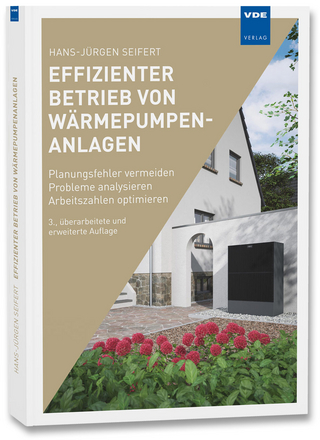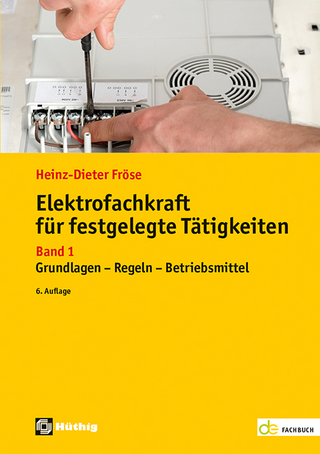
Mobile Edge Computing and Communications
Wiley-IEEE Press (Verlag)
978-1-119-61152-3 (ISBN)
Mobile Edge Computing and Communications offers a practical guide to mobile edge computing and communications (MEC). With contributions from noted experts on the topic, the book covers the design, deployment, and operational aspects of this rapidly growing domain. The text provides the information needed to understand the mainstream system architectures and integration methods that have been proposed in MEC. In addition, the book clearly illustrates critical lifecycle functions and stages of MEC, and shows how to deploy MEC in 5G and beyond mobile networks.
Comprehensive in scope, the book contains discussions on the challenges and opportunities of mobile edge computing and communications concepts combined with the most relevant emerging applications and services. The authors provide insights for all relative stakeholders of mobile networks such as mobile network operators. This important book:
Provides a comprehensive walkthrough of mobile edge computing and communications
Includes detailed analysis of current edge applications and technology foundation
Presents information on driving forces and future directions of MEC
Provides an authentic source of information from industry experts to drive the future of computing
Written for mobile network operators, ICT service developers, academic researchers, undergraduate and graduate students, Mobile Edge Computing and Communications offers a guide to the current and future of MEC that will enable a completely new paradigm for future computing and communications.
Aaron Yi Ding leads the Cyber-Physical Intelligence Lab as a Tenured Faculty of TU Delft University of Technology and Associate Professor (Docent) in Computer Science at the University of Helsinki. He received his PhD degree from the Department of Computer Science (Birthplace of Linux) at the University of Helsinki and his research focuses on Edge AI solutions for cyber-physical systems in smart health, mobility and energy domains. He is an Associate Editor for ACM Transactions on Internet of Things (TIOT), IEEE OJ-ITS and Multimodal Technologies and Interaction. Chamitha De Alwis received his PhD degree in Electronic Engineering from the University of Surrey, UK, in 2014. He works as a Senior Lecturer at the School of Computer Science and Technologies at the University of Bedfordshire. He is also a Senior Member of IEEE and contributes as a Consultant in the areas of telecommunication, 4G, 5G, IoT, and cybersecurity. Madhusanka Liyanage is Associate Professor/Ad Astra Fellow at the School of Computer Science in University College Dublin, Ireland. He is leading the Network Softwarization and Security Labs (NetsLab) at UCD. He is acting as a Docent/Adjunct Professor, University of Oulu, Finland. He received the Doctor of Technology degree in Communication Engineering from the University of Oulu, Finland, in 2016. He is also a Senior Member of IEEE, and received the “2020 IEEE ComSoc Outstanding Young Researcher” award by IEEE ComSoc EMEA.
About the Authors xiii
Preface xv
To Our Readers xvii
Acknowledgments xix
Acronyms xxi
Part I Introduction and Edge Applications 1
1 Introduction 3
1.1 Focus of the Book 3
1.2 The Vision of Edge 4
1.3 Stakeholders and Related Paradigms 6
2 Case for Multi-access Edge Computing 9
2.1 Case for Multi-access Edge Computing 9
2.2 MEC Reference Architecture 12
2.3 MEC Standardization 18
2.4 MEC Use Cases and Applications 19
2.5 Related Computing Paradigms to MEC 26
2.6 Comparison with Related Computing Paradigms 28
2.7 Summary 31
3 Edge-Based Video Analytics and Mobile Augmented Reality 33
3.1 Video Analytics Overview 33
3.2 Edge Video Analytics 35
3.3 Edge-Enabled Augmented Reality (AR) 40
3.4 Architecture Options for Mobile Augmented Reality 43
3.5 Applications of MEC-Based MAR 51
3.6 Technical Aspects of MEC-Based MAR 53
3.7 Summary and Outlook 56
4 MEC 2 for eHealthcare: Empowering Next-Generation Healthcare Systems 57
4.1 Introduction 57
4.2 MEC Enabled Use Cases 59
4.3 Realizing Use Cases with MEC 62
4.4 Deployment Challenges and Solutions 65
4.5 Conclusion 66
Part II Technology Foundation 69
5 Edge AI 71
5.1 Overview of Edge AI 71
5.2 Training and Inference in Edge AI 73
5.3 Edge AI in Practice 79
5.4 Summary and Outlook 80
6 Edge Offloading 83
6.1 Motivation and Fundamental Concept 83
6.2 Edge Offloading 89
6.3 Edge Offloading in Practice 92
6.4 Summary and Outlook 94
7 Edge Storage and Caching 97
7.1 Edge Storage 98
7.2 Edge Caching 102
7.3 Edge Caching Towards Information-Centric Networking 103
7.4 Conclusion 105
8 Edge Communication, Hardware and Enabling Frameworks 107
8.1 Advancement of Communication Technologies 107
8.2 Evolution of Communication Networks 110
8.3 Edge Computing Landscape 115
8.4 Edge Computing System Solutions 119
8.5 Edge Hardware and Devices 125
8.6 Edge Accelerators 130
8.7 Industry Frameworks 133
8.8 Concluding Remarks 136
Part III Integration and Driving Forces 137
9 Driving Forces for Edge Integration 139
9.1 Internet of Things Toward Internet of Everything 139
9.2 The Growth of Small Data 140
9.3 AI/ML Based Communication Technologies 140
9.4 Novel Technologies and Applications 141
9.5 Conclusion 143
10 Edge Security 145
10.1 Introduction 145
10.2 Security Threats in MEC 146
10.3 Threat Vectors Related to the Access Network 146
10.4 Threat Vectors Related to the Mobile Edge Network (MEN) 150
10.5 Threat Vectors Related to the Core Network 153
10.6 Architectural Threat Vectors 156
10.7 Security Requirements of MEC 160
10.8 Possible Security Solutions for MEC 165
11 Edge Privacy 171
11.1 Introduction 171
11.2 Privacy in 5G and Beyond 172
11.3 MEC Privacy 174
11.4 Objectives for Privacy Preservation in MEC 178
11.5 Privacy Protection Mechanisms for MEC 180
11.6 Future Directions 184
12 Telecom and Cloud Integration 189
12.1 Introduction 189
12.2 Network Softwarization in 5G Networks 190
12.3 MEC Integration in 5G Backhaul 191
12.5 Conclusion 203
Part IV Outlook 205
13 Conclusion and Outlook for MEC 2 207
References 209
Index 245
| Erscheint lt. Verlag | 28.1.2025 |
|---|---|
| Reihe/Serie | IEEE Press |
| Sprache | englisch |
| Maße | 170 x 244 mm |
| Themenwelt | Technik ► Elektrotechnik / Energietechnik |
| Technik ► Nachrichtentechnik | |
| ISBN-10 | 1-119-61152-0 / 1119611520 |
| ISBN-13 | 978-1-119-61152-3 / 9781119611523 |
| Zustand | Neuware |
| Informationen gemäß Produktsicherheitsverordnung (GPSR) | |
| Haben Sie eine Frage zum Produkt? |
aus dem Bereich


